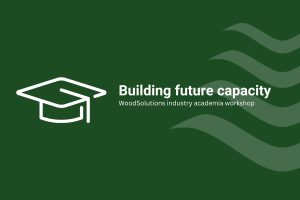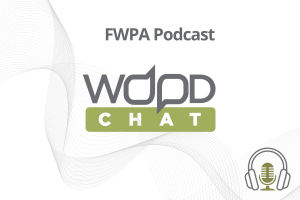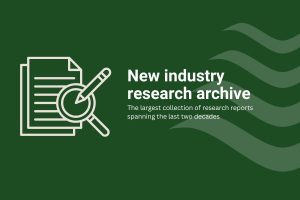Responsible Wood, and the University of Tasmania’s Centre for Sustainable Architecture with Wood, recently hosted a field trip in Launceston, Tasmania, to strengthen ties between the design and build community and the forest and wood products sector.
Held in collaboration with Sustainable Timber Tasmania (STT), Timberlink, Forico Pty. Limited, Forest and Wood Products Australia (FWPA), and the Tasmanian Forest Products Association (TFPA), the event offered architects and designers a firsthand look at sustainable forest management and ethical timber supply chains.
Here, Rhiana Archie, FWPA’s Marketing and Communications Business Partner, shares her insights on the day’s event.
A Field Trip with Responsible Wood by Rhiana Archie
Our industry has a great story to tell when it comes to sustainability and renewability, so when Matt de Jongh at Responsible Wood approached FPWA to be involved in the field trip, we were happy to support. Showing the people who design and build with timber materials the whole value chain of forest products first hand was incredibly valuable.
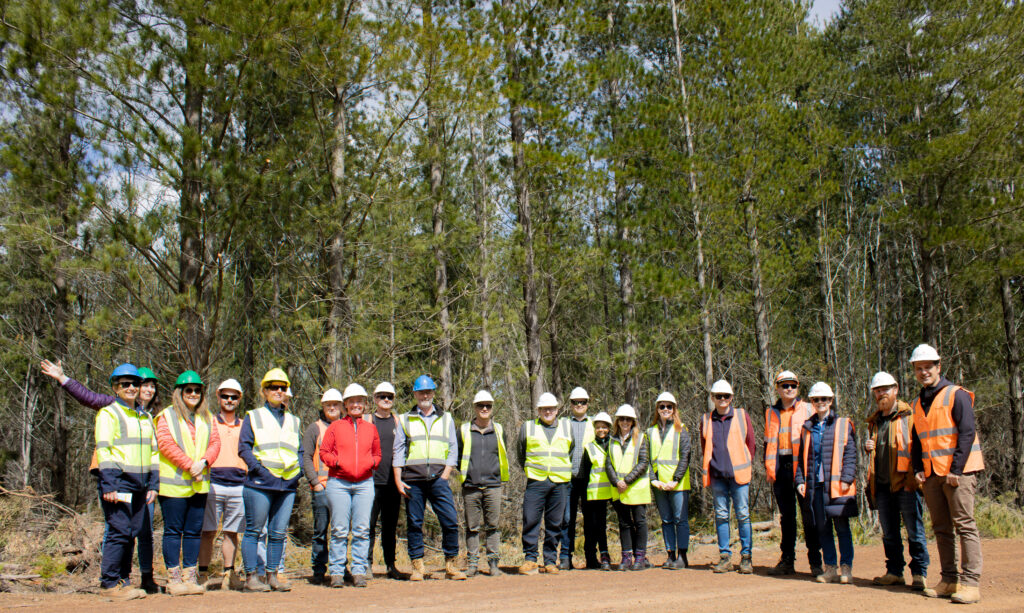
Exploring forest certification and supply chain transparency
The tour was packed with people who are passionate about forests and wood products. There was representation from the Forest Practices Authority (FPA), and we got to catch up with some of the researchers from the Centre for Sustainable Architecture with Wood at the University of Tasmania (who we have an exciting co-announcement coming from soon… stay tuned!). Our group met at the University of Tasmania Inveresk Campus and set off on a bus to the field sites. Matt spoke to our group about Responsible Wood certification and the two different standards of certification in Australia and New Zealand (AS/NZS 4708 and AS 4707). He shared some great facts and stats about Australia’s forested land such as, Australia is home to 133.6 million hectares of forest, which makes up 17% of the country’s total land area. We also learned that contrary to common belief, Australia is still the sixth most forested country in the world.
We heard about transparency in the supply chain, which is something that is so important for businesses to embrace. Responsible Wood operates as a certified standards writing body. That means they represent the PEFC certification scheme in Australia and New Zealand*, and these certifications standards aren’t just a blanket document that is one size fits across the globe. The standards here are specifically written using the science and data of Australia and New Zealand forests and habitats. Another great thing about this certification is that third party organisations visit and do the groundwork of checking forest harvesting operations and certifying their compliance with the standard. This means that there is a true system of checks and balances for these organisations to prove the sustainability and considerations of their entire supply chain and operations.
Forest practices, biodiversity, and collaborative land management
Our first stop was a native forest site that is managed by the team at Sustainable Timber Tasmania (STT). We walked into the plot of trees and got to take in all the still-standing trees with regrowth shining through in those familiar native reds and blues. At this site we heard from Stephen Rymer, Northwest Regional Manager. Stephen was so full of knowledge about the land he manages that it was hard to keep up with my note taking.
Stephen shared the forest practices plan for the area of land we visited. The plan is an all-encompassing, legally binding roadmap for what can be done in the forest and how it must be approached with an operating map. These forest managers really are like ‘forest doctors’ who are prescribing how the land and habitat will be managed including every potential species in the area from glossy grass skinks to masked owls and wedge-tailed eagles. STT freely publishes these forest practices plans and they are available for download on their website. The public can see the specific practices they are using to manage biodiversity in their forests.
They also publish a three-year plan and regulators such as the FPA check in and make holistic considerations for the environment with inputs from all organisations operating in the area. This means that every forestry operation taking place is considered from a macro point of view to preserve the land, communities, and biodiversity. It was encouraging and exciting to see just how much collaboration and consultation goes into harvesting trees in these forests. The other operators are consulted and considered before the forest practices plans are finalised. Sotoo are local landowners and people who live in and care for these communities.
We also heard from the FPA team, who discussed the evolving nature of plans and regulations in forest certification. The standards and oversight that goes into managing forested land is not insignificant here in Australia. And another great thing is that certification is completely voluntary. So, these people and organisations are holding themselves to a high standard on their own accord and not because of arbitrary requirements set by a person in an unknown office in a faraway city.
The teams at STT and Forico also work as firefighting agencies. They fight fires on their own lands, but they also manage for and fight fires in the surrounding communities and provide interagency cooperation to manage fire as well.
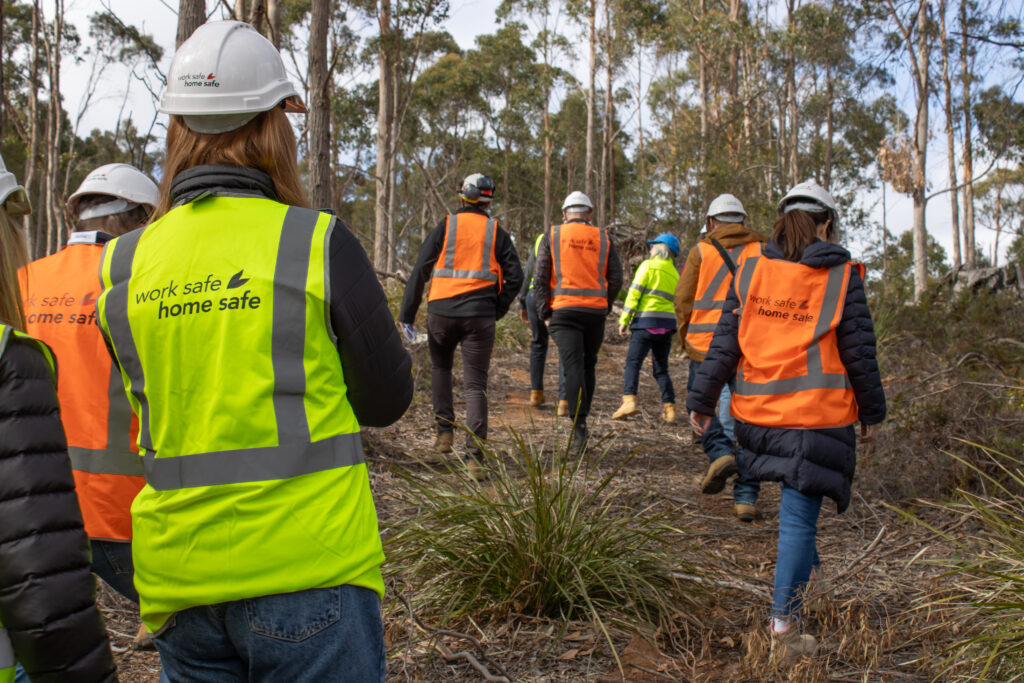
Commitment to Indigenous engagement and sustainable land stewardship
After this big download of information, our group was back on the bus and driving through estates managed by the team at Forico. We got a closer look at the land being actively managed and learned more about Forico’s commitment to Indigenous engagement and other responsibilities in managing their vast amount of forest land. Because the organisation is such a large landowner in Tasmania, Forico consults with Indigenous groups to work toward integrating the deep cultural traditions and sustainable land management practices of Tasmania’s First Peoples into its ongoing custodianship of natural resources. This approach not only honours the rich heritage of the land but also fosters a long-term vision for responsible environmental stewardship, ensuring future generations benefit from both ecological and cultural sustainability.
Innovative approaches to resource recovery and sustainability
Next, we stopped at the Timberlink facilities in Bell Bay where we were welcomed for lunch and a tour of the 64-hectare operation. We started in the green mill where we got a bird’s eye view of the logs going into the facilities for processing. We then got to chat about the resource recovery systems in place at Timberlink as we checked out kilns, in particular the continuous dry kiln. These continuous kilns are impressive because while they provide huge economic and throughput benefits, they are also better for our environment because of their energy efficiency and the waste and defects they reduce through uniform and constant drying. Watching these kilns gain momentum across the industry in Australia is an inspiring innovation.
After the kilns, we went through the dry mill, saw shop, and the new finger jointing and wood plastics composite processes. Timberlink is a great example of a major player in our industry working toward resource recovery and novel solutions for forest products. Timberlink is dedicated to ensuring that no part of the wood goes to waste. The company repurposes offcuts into quality woodchips, which are highly sought after by paper manufacturers for producing premium paper products. Other by-products, such as bark and shavings, are used in landscaping, pet supplies, or as a renewable energy source to power their own kilns. This circular approach is just one example of Timberlink’s strong commitment to sustainability throughout its operations.
A final tour of engaging education spaces and collaborative opportunities
We rounded off the info-packed day with a tour of University of Tasmania’s Centre for Sustainable Architecture with Wood, led by Gary Fleming, the local Wood Encouragement Officer who works with us on WoodSolutions resources. Gary showed us the impressive facilities and tools the students get to work with, and the amazing and creative things these students are doing. We wandered over to the beautiful Rivers Edge building designed by Wardle Studio and built by Fairbrother. The design of this building is so stunning and really puts the local Tasmanian timber products used on show.
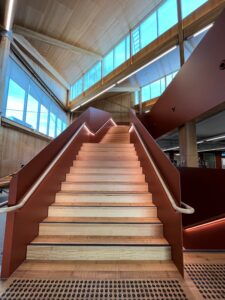
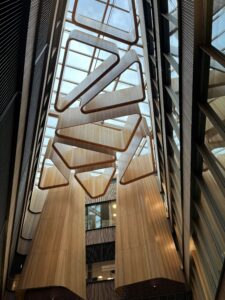
Reflecting on what we learned and what it means for industry
I’m incredibly grateful to have been invited to join this field trip. It was a great opportunity to get down to Tasmania and learn from the experts and true timber devotees down there. It’s a great example of the power of collaboration and communication to achieving progress toward an environmentally sustainable industry. Working with certified sustainable forest and wood products is something to be proud and we can take that message to the people who use our products every day in designing buildings and homes and so much more.
*Australia has two active certification schemes:
- Australian Forestry Standard (AFS) now known as Responsible Wood
- Forest Stewardship Council (FSC): learn more via this link
Responsible Wood is internationally recognised through the Program for Endorsement of Forest Certification (PEFC). FSC is internationally recognised through the FSC global brand.
